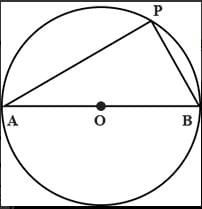Test: Quantitative Techniques- 4 - CLAT MCQ
20 Questions MCQ Test - Test: Quantitative Techniques- 4
Find the greatest number which divides 285 and 1249, leaving remainder 9 and 7?
Shopkeeper offers 10% discount on an article and still makes a profit of 20%. What is the CP of the article marked at 500?
A fair price shopkeeper takes 10% profit on his goods. He lost 20% goods during theft. His loss percent is?
If a diagonal of a rhombus are 8 and 6 then the square of its side is?
Atyre has 2 punctures, the first can alone empty the tire in 9 min and 2nd can empty the tyre in 6 mins. How long will it take to empty the tyre by both punctures?
In a group of 500 students, 103 students like coco cream and vanilla cream, 300 students like only vanilla cream how students like only coco cream?
285 is summation of 3 numbers. Ratio between 2nd and 3rd numbers is 6:5. Ratio between 1st and 2nd numbers is 3:7. The 3rd number is?
A box contains 36 marbles some are blue and others are green. If a marble is drawn at random from a box the probability that it is green is 2/3. Then no. of blue ballsare?
Raman loses 30% of his money after spending 25% of the remaining he still has Rs 525. How much money did he originallyhad?
If a point (x, y) ina oxy plane is equidistant from (-1, 1) and (4, 3) then?
If the diameter of a cylinder is 28 cm and its height is 20 cm, then total surface area is?
If the curved surface area of a cylinder is 1760 cm2 and its base radius is 14 cm when it’s height is?
Tap A and B can separately fill the tank in 10 hours 15 hours respectively. If both taps are opened together, how much time will it take to fill the tank fully?
The diameter of a wheel is 98cm. Howmuch revolutions will it take to cover a distance of 1540m?
On selling 100 mangoes, a person gains selling price of 20 mangoes. Find his gain percent?
Angles ofan quadrilateral are in the ratio 3:4:5:8. The smallest angle is?





















